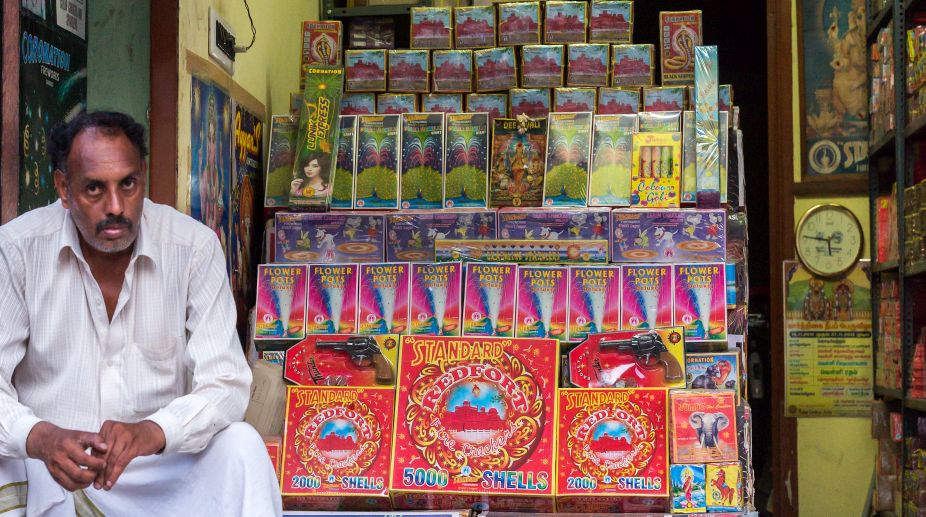The Central Pollution Control Board (CPCB) has written to the Petroleum and Explosives Safety Organisation (PESO), seeking the necessary steps to display health and pollution-related warning on firecracker boxes, like the ones on cigarette and tobacco packets.
The CPCB move followed environment conservationist Vikrant Tongad’s suggestion to the CPCB. The activist in a letter to the officials pointed out the Supreme Court’s order banning the sale of firecrackers in the national capital during Diwali in a bid to curb pollution.
Advertisement
“Smoking harms the smoker but the fireworks harm everyone… it has both health and environmental risks, but there is no warning on the firecrackers or its packet. Though doing so would increase awareness amongst people,” Tongad pointed out in the letter.
The CPCB has thus raised the issue with the Chief Controller of Explosives, PESO (Nagpur, Maharashtra), saying: “The undersigned is directed to inform that necessary action may be taken with intimation to the office of the undersigned.”
Fireworks use highly toxic iron, aluminium sulfur, copper, strontium and others, for bang and colour effects, which are then directly emitted in the air leading to harmful effects.
Recently, a CPCB report showed that due to the apex court’s order, the national capital this Diwali saw a drop in the concentration of these harmful elements compared to Diwali 2016.
The elements include aluminium (9.9 percent drop), sulfur (20.1), chlorides (11.0), potassium (29.9), calcium (37.8), iron (48.1), copper (36.3), zinc (41.1), strontium (64.6), antimony (35.6) and barium (51.7) — all are used in the firecrackers, either for a louder bang, throttling or colour.
“All the elements except titanium saw a drop, as there was a little bit rise in the titanium which we are still trying to find out why, ” the CPCB scientists told the media recently.











